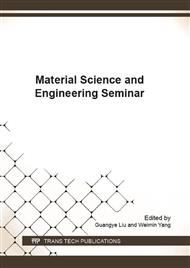p.3
p.9
p.14
p.22
p.27
p.32
p.38
p.47
Effect of Rotation Speed and Discharging Temperature on SSBR-Silica Interaction
Abstract:
The effects of rotor speed and discharging temperature on silica 1165MP-SSBR 5025-2 interaction as well as the mechanical properties and dynamic viscoelasticity are investigated in this work. The result shows that the discharging temperature increases linearly with increase of rotation speed, leading to increase of bound rubber content. The tensile strength, elongation at break and tear strength increase firstly, and then decrease with increase of rotation speed. However, the strength at 100% and 300% deformation decrease, and then they increase. The wet skid resistance of SSBR5025-2 filled with silica 1165MP improves with increase of rotation speed and discharging temperature, and the rolling resistance decreases.
Info:
Periodical:
Pages:
3-8
Citation:
Online since:
November 2016
Authors:
Keywords:
Price:
Сopyright:
© 2017 Trans Tech Publications Ltd. All Rights Reserved
Share:
Citation:


